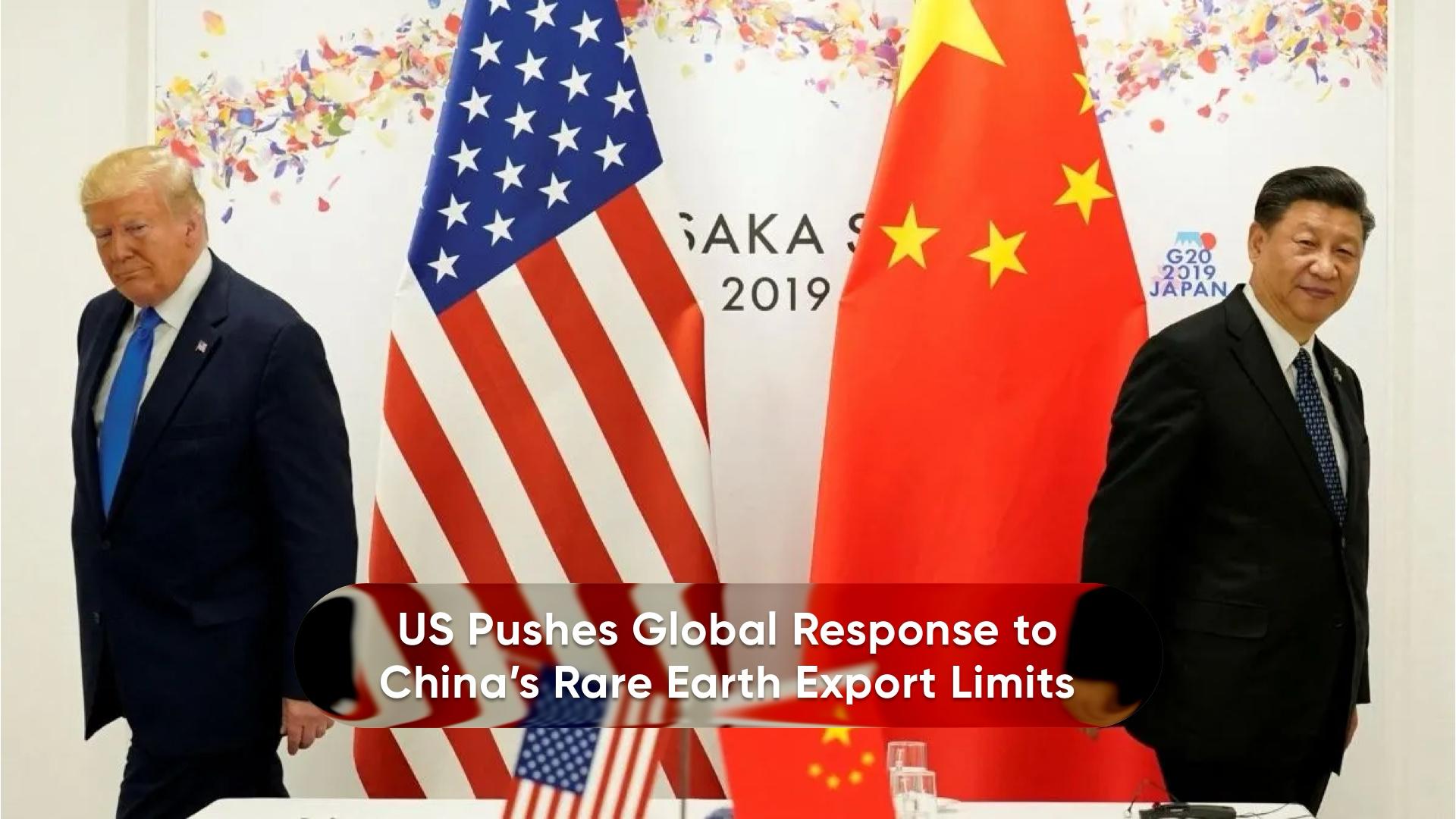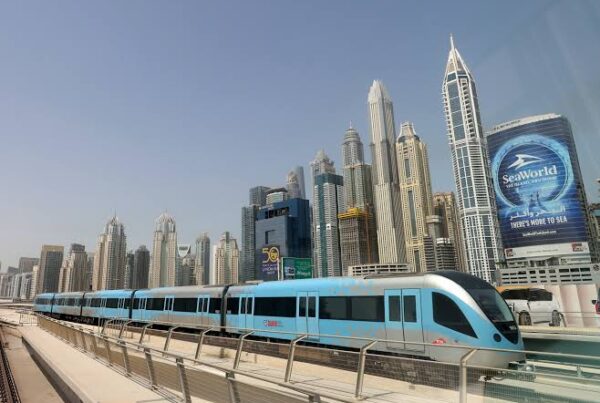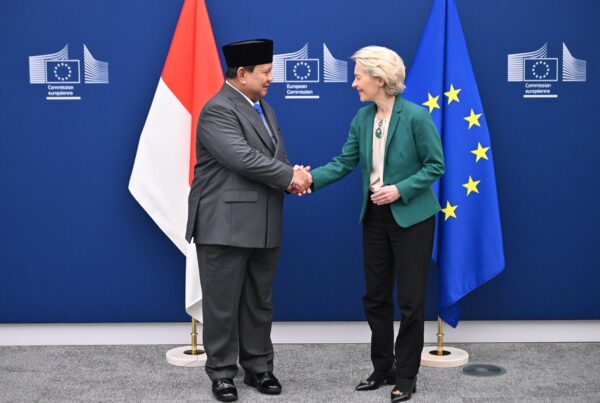The Rare Earth export restrictions imposed by China have prompted a strong reaction from the United States, which is now calling for a coordinated global response. Washington views Beijing’s move as a strategic maneuver that could endanger the stability of global supply chains critical to advanced manufacturing and clean energy technologies.
Beijing’s restrictions, announced earlier this month, target the export of several rare earth minerals essential for producing semiconductors, electric vehicle batteries, and military-grade components. The decision has sent ripples through global markets, with fears that it could trigger another round of trade confrontations similar to those witnessed during the U.S.–China trade war.
Global Economic Repercussions
Analysts warn that the rare earth restrictions could have far-reaching implications for industries dependent on these materials. The United States, Japan, and the European Union are among the largest importers of rare earth elements from China, which currently controls nearly 70 percent of global production.
Rare Earth and Its Strategic Importance
Rare earth elements are vital in the production of modern technology, from smartphones to fighter jets. The minerals’ scarcity and complex extraction processes make them a valuable geopolitical asset. China’s dominance in the sector has long been a concern for Western economies that rely on stable supplies to support their industries.
Beijing argues that the restrictions are intended to preserve national resources and promote environmental sustainability in mining operations. However, many observers see the move as a geopolitical signal amid ongoing tensions over trade, technology, and regional security.
The U.S. Call for Collective Action
In response, Washington has urged its allies in Europe and Asia to coordinate policy measures that reduce dependence on Chinese rare earth exports. “We cannot allow a single country to weaponize critical materials,” said U.S. Secretary of State Antony Blinken during a press briefing. He emphasized the need for “collective resilience” in supply chains that underpin the global technology economy.
The Biden administration is reportedly considering a range of responses, including new trade partnerships with resource-rich nations such as Australia and Canada, as well as increased investments in domestic mining and refining capacities.
Rising Tensions in the Indo-Pacific
The dispute comes at a time when the Indo-Pacific region is already fraught with geopolitical rivalries. The U.S. and its allies, including Japan and Australia, have intensified efforts through the Quadrilateral Security Dialogue (Quad) to promote economic security and counter Beijing’s growing influence.
Japan and Australia’s Role in Supply Diversification
Japan, one of the world’s largest importers of rare earth materials, has accelerated its efforts to diversify supply sources. Tokyo’s trade minister announced plans to expand mining partnerships in Africa and Southeast Asia, aiming to reduce China’s share in Japan’s imports to less than 50 percent by 2030. Meanwhile, Australia has pledged to increase its rare earth production, supported by investments from the U.S. and European partners.
These moves underscore the growing consensus among Western economies that strategic minerals must no longer be concentrated under a single supplier’s control.
Europe’s Strategic Autonomy
The European Union has also joined the call for action. In Brussels, the European Commission is finalizing the Critical Raw Materials Act, which aims to secure supply chains for essential resources, including rare earths and lithium. EU Commissioner Thierry Breton stated that the bloc’s “strategic autonomy” requires reducing dependencies on any one country, a sentiment echoed across member states concerned about supply disruptions.
Beijing’s Perspective and Global Response
From Beijing’s perspective, the export restrictions are a legitimate sovereign right designed to safeguard national interests. Chinese state media have framed the policy as part of a broader strategy to upgrade domestic industries and promote sustainable resource management.
Balancing Sustainability and Strategy
China’s Ministry of Commerce insists that the restrictions are consistent with global environmental goals. However, critics argue that they reflect a pattern of using economic leverage for political ends. The move comes after several Western nations tightened export controls on advanced semiconductors and AI technologies to China, raising speculation that Beijing’s rare earth policy is a countermeasure.
International markets have responded with volatility, with rare earth prices surging by more than 25 percent since the announcement. Manufacturing sectors, particularly electronics and defense, are bracing for potential shortages that could affect production timelines and costs.
Diplomatic Efforts to Ease Tensions
Diplomatic dialogues are now intensifying to prevent the escalation of a full-scale trade confrontation. The G7 nations are expected to discuss coordinated responses at the next ministerial meeting in Tokyo. Washington has also initiated bilateral talks with Seoul and New Delhi, urging greater collaboration in building alternative supply routes and refining facilities.
The Future of Global Mineral Security
Experts believe that the rare earth crisis could reshape global trade dynamics for years to come. It highlights the urgency of diversifying critical material sources and investing in recycling technologies that can reduce dependency on new mining.
Emerging Opportunities for New Producers
Countries like Vietnam, Brazil, and Greenland are emerging as potential suppliers of rare earth elements. Multinational corporations are already exploring long-term investments in these regions, encouraged by government incentives and rising global demand. The U.S. Geological Survey has identified several untapped deposits that could help secure domestic supplies within the next decade.
Technological Innovations and Recycling
Beyond mining, technology companies are investing in innovative recycling methods to recover rare earth materials from electronic waste. Firms like Apple and General Motors have announced initiatives to reuse materials from old devices and vehicles, potentially reducing the strain on new mining operations.
These developments align with broader environmental goals while strengthening resilience in global supply chains.
Balancing Competition and Cooperation
While tensions remain high, some experts suggest that the rare earth dispute could also pave the way for renewed cooperation. Global challenges such as climate change and sustainable energy transitions require shared solutions that transcend political rivalries.
Efforts to establish international frameworks for resource governance could prevent future crises and promote transparency in mineral trade. Organizations like the International Energy Agency (IEA) have called for new standards that ensure fair access and sustainable practices across the rare earth industry.
The rare earth export restrictions have once again positioned China and the United States at the center of a global power struggle over strategic resources. As Washington rallies allies for a collective response, the world faces a pivotal moment in reshaping the balance of economic and technological power.
If managed carefully, the crisis could accelerate the diversification of supply chains and spur innovation in sustainable technologies. However, failure to reach consensus risks deepening global fragmentation.
For more in-depth coverage on global trade, technology, and geopolitics, visit Olam News and explore our related reports on supply chain resilience and mineral diplomacy.









